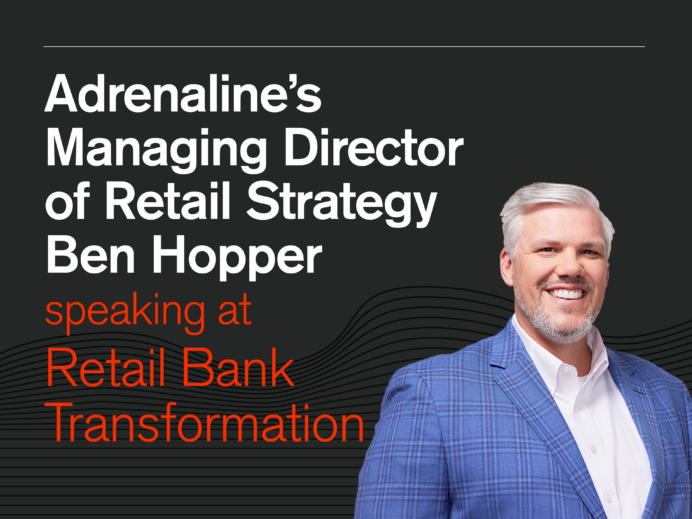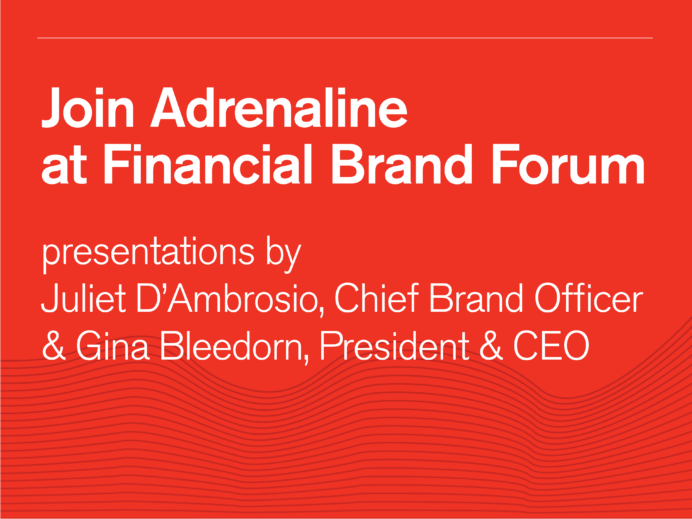Strategic approaches to thought leadership can help brands separate themselves from the pack. Find out how we did it with insights from our recent presentation on white paper development and deployment.
Last week, Adrenaline’s Gina Bleedorn and PR consultant Lynn Harris Medcalf presented at the Public Relations Society of America (PRSA) Southeastern Regional Conference discussing the agency’s strategic approach to thought leadership. While the focus of the workshop centered around the development of white papers to highlight our agency’s perspective and leadership in experience design, the strategic concepts underpinning our approach are ones we’re quite familiar with. After all, they are the same ones we deploy for our clients.
Turning the mirror on ourselves, we are outlining our process – one that places strategy squarely at the center of agency initiatives, like content creation and thought leadership development. Understanding that these concepts can be universally applied to brands across many industries, we’re sharing our perspective to illustrate how brands can enhance engagement by leveraging thought leadership in a novel and powerful way.
For our content efforts, we integrate our deep understanding of audience, industry and perspective into white papers. Through embracing our sweet spot – our unique expertise in the market – we were able to create meaningful engagement with our Why the Y and Creating a Universal Experience white papers. To ensure our approach is not overly broad, it was important that we focus on specific topics under the brand’s larger umbrella. We knew the topics we developed must marry to conversations and issues bubbling up within our industry.
Just as we do with our client projects and campaigns, we take an audience first approach to developing our white papers. Before we even begin researching our topics, we identify who we will be communicating with and more importantly, why we want to be communicating with them. We know that brands who stand behind a bigger idea – why they do what they do – have better positioning and cultivate greater brand enthusiasm and interaction among their audiences. For our audiences, we know our big why – we want to provide insights and information that will shatter stereotypes, enhance decision-making and help solve problems.
Audiences can be tricky. Do you want to create content for everyone within your audience or do you want to create meaningful content for a smaller subset of your audience? For us, we had two different approaches for our white papers. We wanted to generate better understanding about the Millennial demographic and reach a wide audience-base for Why the Y. We work with many clients grappling with new approaches for younger audiences, so we knew we understood the myths about Millennials and how to shatter stereotypes. This audience included clients, brands, marketers, communicators, and advertisers. But really, anyone interested in generational demographics would find our paper interesting and illuminating.
Our method for Creating a Universal Experience was wholly different. Here, we wanted to communicate to banks to help define the concept of the universal banker and facilitate deploying the concept. Banks today are struggling with a disrupted marketplace and must have innovative solutions within a legacy industry. This was a very specific topic aimed toward a specific audience – all of whom had or will have a pressing need to understand this topic. Given our experience in helping banks design their institutions for universal experiences, we have a unique take on the concept. While each white paper reached different audiences – one broad-based and one highly specific – both sat squarely within our wheelhouse of expertise.
The common element of both white papers? They were both focused on identifying a problem and sharing insights and information that can shift perceptions and solve problems.







